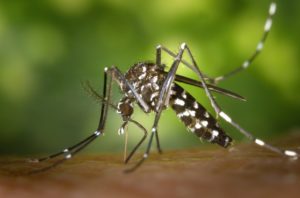22 Feb Math Models Show How Mosquitoes Spread Diseases
How Mosquitoes Spread Disease – Under the Microscope
Mosquitoes are not simply just a nuisance; they also can carry and transmit infectious diseases that are harmful to our health. The Zika virus, dengue fever and Chikungunya are just a few of the most well-known diseases that mosquitoes can carry. Mosquito-borne illnesses are a constant threat and are putting our population at risk for outbreaks. Scientists and researchers are using mathematical models to better understand how mosquitoes spread diseases, and to calculate the risk of infectious outbreaks in various climates and environments.
The Facts
According to research professionals, mathematical models can help them understand how mosquitoes spread diseases by gaining a thorough understanding of how mosquito development, survival and behavior are influenced by different environmental variables. Once mosquitoes are hatched, males usually survive less than one week, while female mosquitoes can live up to a couple of months in ideal conditions. For females, they can produce up to 100 eggs at a time, usually laying three sets of eggs during their life cycle. Even though mosquitoes do not live very long, they reproduce in large numbers very quickly, making it difficult to control their population.
The Research
There are approximately 3,500 different species of mosquitoes in the world, almost 200 of them residing in the United States. Researchers have spent decades studying and estimating how different species of mosquitoes grow. Today, researchers are focusing on various mathematical functions and probabilities in their research and testing to determine how the growth of different species relates to the spread of infectious diseases. Some of their research includes how long eggs remain sustainable before environmental conditions permit them to hatch, how well adult mosquitoes survive in various climates and most importantly, how long a virus takes to develop inside of a mosquito.
In the lab, the mosquitoes’ lives are controlled by combinations of different temperatures, precipitation and humidity levels. Researchers incorporate their results into the mathematical models to predict the proportion of females that could be infected with a specific virus. Their hope is to determine how mosquitoes spread diseases as a result of population growth under various conditions.
Protect Yourself and Your Family with NET effect
Not all of us are expert researchers; fortunately, there is NET effect to protect you and your loved ones from mosquito bites and mosquito-borne illnesses. NET effect is an insect repellant unlike others. Our repellant comes in a unique roll-on applicator, so it is easier and safer to apply. Containing 20% DEET, NET effect provides long-lasting protection from mosquitoes and other insects that may be carrying diseases, such as ticks, biting flies, gnats, chiggers, fleas and no-see-ums. Visit our website to learn more about NET effect and shop for your own bottle today!

